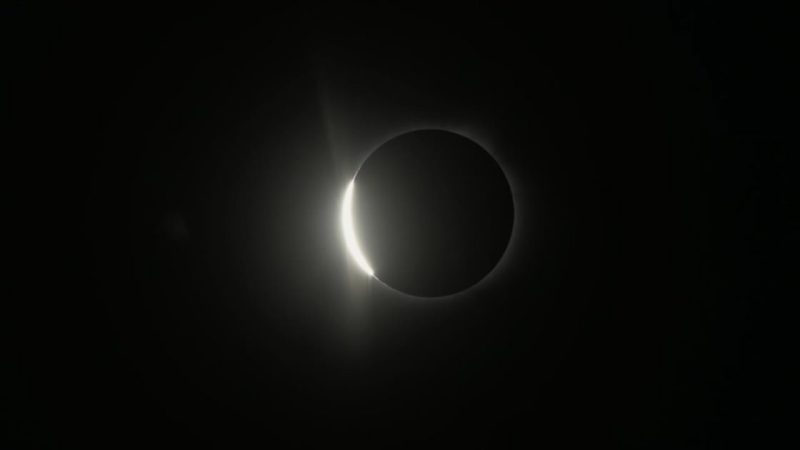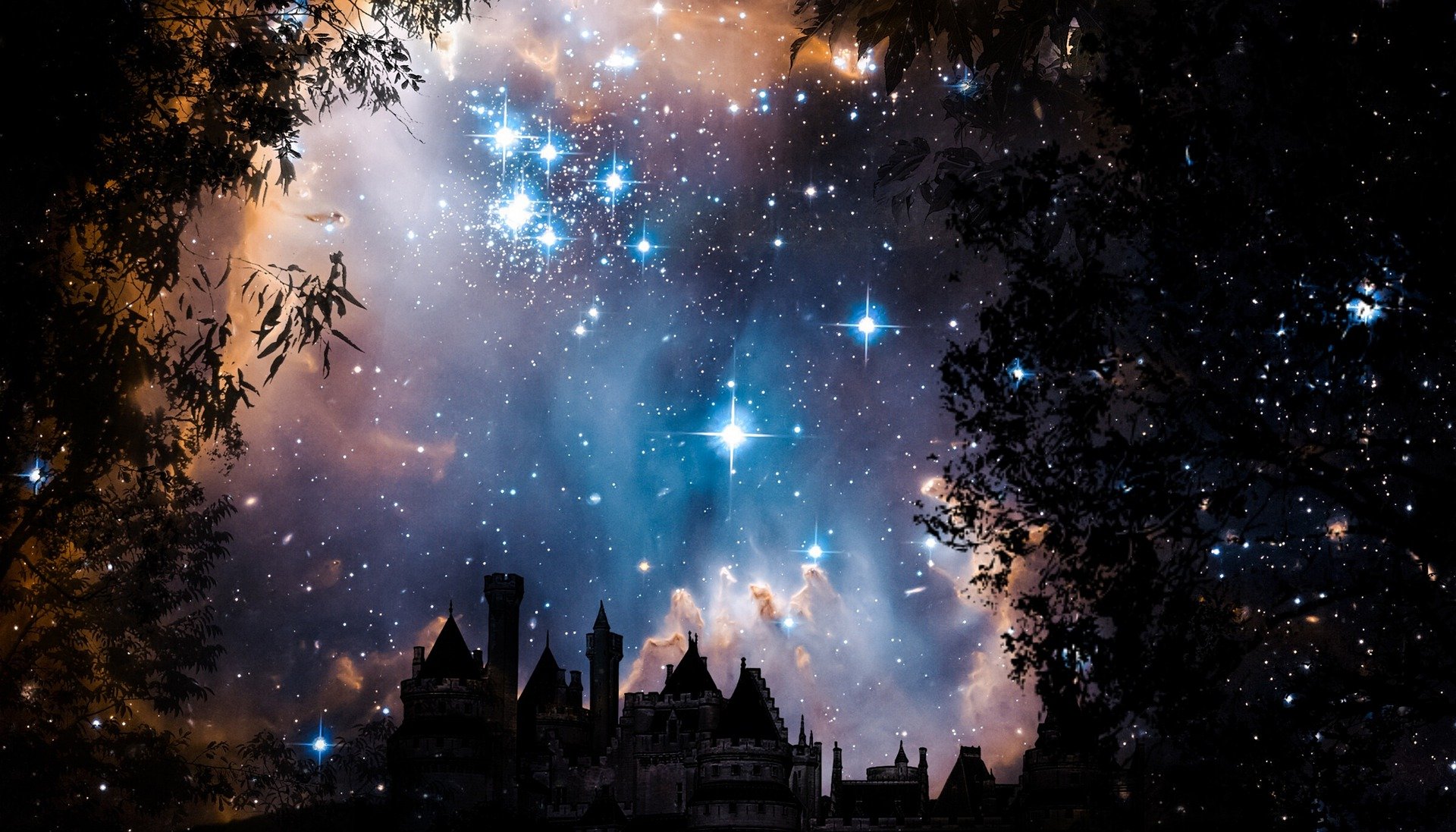April 8 solar eclipse expected to bring unique experiences

April 8, the day of the total solar eclipse, is just hours away, and we will be there to witness the historic astronomical event of daylight turning into darkness in the sky. This solar eclipse is to become significant, as it will provide both experienced astronomers and amateur stargazers with some distinct experiences. During the occurrence of the phenomenon, the Moon will pass between the Sun and Earth, completely blocking the Sun’s face, causing the sky to darken as if it were dawn or dusk.
Why April 8th Solar Eclipse Stands Out
Compared to the previous solar eclipse in 2017, this of April 8 promises to be even more remarkable. And a notably good news for observers: the eclipse will last approximately 4 minutes and 28 seconds, traversing Mexico, the United States, and Canada. Here are the key factors that distinguish this eclipse:
Unprecedented Accessibility
The 2024 eclipse will span a vast area, extending from Mexico to Canada. Roughly 100 million people in the U.S. will find themselves within its path, making it highly accessible to a large portion of the population. Picture families gathering in major cities such as Dallas, Indianapolis, and Buffalo, all witnessing the moment when the Moon completely obscures the Sun.
Impressive Phenomenon
Unlike other eclipses where a ring of sunlight remains visible (annular eclipses), this will be a total solar eclipse, causing complete darkness during totality. Observers will have the opportunity to witness the Sun’s corona, a radiant plasma ring encircling it, which is truly captivating. Recall the experience in 2017 when viewers in Oregon beheld this phenomenon; it left a lasting impression.
Emotional Impact
Eclipses evoke profound emotions. In 2017, 215 million people in the U.S. watched in awe as the eclipse unfolded, with some even moved to tears of joy. The fleeting nature of totality intensifies these emotions, creating a deeply immersive experience. Imagine families gathered in the Great Smoky Mountains National Park, their faces illuminated by the corona, forging memories that endure.
Long-Term Rarity
After 2024, the next total solar eclipse visible over the U.S. won’t occur until 2045. This considerable gap underscores the rarity of the event, making April 8th a truly exceptional opportunity. Consider the impact on a child witnessing this eclipse; it’s a memory they’ll carry with them until the next one graces the skies decades later.
Special Preparations for Viewing the Rare Eclipse
As the rare eclipse is there, efforts are being made to ensure everyone can safely enjoy the event. Preparations are almost complete for utilizing the rare-in-a-lifetime event, with companies like Warby Parker giving out free, safe solar eclipse glasses.
Technology, like The Eclipse App, which was developed for this particular 2024 total eclipse by Stephen Watkins and Jesse Tomlinson as a product offering from The Eclipse Company in partnership with The Planetary Society, is ready to help people find events and track the eclipse path. The App is available for free for iOS in the App Store and for Android in the Play Store.
Even astronauts on the International Space Station are getting ready. NASA’s Eclipse Soundscapes Project wants to record how the eclipse affects nature.
Interestingly, Delta Air Lines is offering a special flight for passengers to see the eclipse from high above.
This eclipse is a big deal for both enthusiasts and scientists; so are the preparations in size. It’s a chance to learn more about things like shadow bands. Safety is crucial, and NASA advises using special glasses or indirect methods to view the eclipse safely.
What will Astronomers Look for During the Event?
During the total solar eclipse, astronomers have indicated their intent to observe Bailey’s beads, the diamond ring effect, and the sun’s corona. These are all stunning sights that make eclipses so special. In addition, this event gives astronomers a chance to study gravitational lensing, which is expected to help us understand Einstein’s theory of general relativity better. Here’s a breakdown of what they’ll be focusing on:
Corona and Solar Atmosphere
Astronomers will be closely examining the solar corona, which is the outer layer of the Sun’s atmosphere. This part is normally hidden by the Sun’s bright light, but during an eclipse, it becomes visible. Scientists aim to understand more about the corona’s structure, temperature, and magnetic fields to uncover its mysteries.
Prominences and Flares
These are massive loops of solar material that become visible at the edge of the Sun during an eclipse. Researchers will be studying how these loops move and interact, as well as keeping an eye out for solar flares, sudden bursts of energy. Learning about these events helps us understand solar activity and its effects on Earth.
Stellar and Planetary Observations
As the sky gets darker during the eclipse, stars and planets become visible. Scientists will seize this opportunity to observe and calibrate their instruments, measuring star positions and brightness. They’ll also focus on studying Mercury, which is usually hard to see due to its proximity to the Sun.
Animal Behavior Studies
Scientists are also interested in how animals react to the sudden darkness. Birds, insects, and other creatures might change their behavior during the eclipse. By documenting these changes, researchers hope to gain insights into animal rhythms and senses.
Temperature and Light Changes
During the eclipse, there will be noticeable drops in temperature and changes in light. Astronomers will be documenting these variations. They’ll also be studying Baily’s beads effect, where sunlight filters through lunar valleys, creating bright spots around the Moon’s edge.
Gravitational Lensing
Scientists are also planning a big for this total solar eclipse event. Precise measurements of the deflection angle of starlight near the Sun serve as a test for Einstein’s theory. If the measurements deviate from the expected values, it could indicate the presence of new physics beyond general relativity.
In addition to this, they have also the opportunity to witness microlensing events, where background stars temporarily brighten due to the bending of their light by foreground objects such as planets or dark matter. Studying these events helps in mapping unseen matter within the solar system.
Safe Ways to View the Solar Eclipse
To witness the eclipse safely and protect your eyes, experts suggest to follow some simple yet important guidelines such as using ISO-certified solar eclipse safety glasses. If you don’t have these glasses, they have suggested that simple pinhole projectors provide a safe way to indirectly watch the eclipse. Here’s what experts say about safety:
Solar Eclipse Glasses
Dr. B. Ralph Chou, Professor Emeritus at the School of Optometry & Vision Science, University of Waterloo, Ontario, Canada, illustrates the importance of using proper eclipse glasses. “Looking at the sun without proper eye protection during an eclipse can cause permanent damage to your eyes. Eclipse glasses are specifically designed to filter out harmful rays and allow safe viewing of the sun,” Prof. Dr. Chou suggests.
“Solar retinopathy occurs when the intense UV radiation damages the cells in the retina. This damage can lead to permanent blind spots or impaired vision,” Prof. Dr. Chou warns.
Pinhole Projector
According to experts, you can create a pinhole projector as a safe alternative if you don’t have solar eclipse glasses. “A pinhole projector is a safe and easy way to indirectly view the eclipse. It works by projecting an image of the sun onto a surface, such as the ground or a wall. You can make one using a cardboard box or even your hands.” explains Dr. Jay Pasachoff, an astronomer and eclipse chaser.
Dr. Pasachoff also advises not to look directly at the sun through the pinhole but to focus on the projected image to avoid eye damage.
Special Filters for Cameras and Binoculars
When using optical devices like cameras, binoculars, or telescopes to capture the eclipse, it’s essential to use solar filters specifically designed for these devices. Regular eclipse glasses or handheld viewers should not be used with optical equipment, as they can cause irreversible damage to both your eyes and expensive equipment.
“Using the wrong filters can lead to irreversible damage to your eyes and expensive equipment. Always follow the manufacturer’s instructions for using solar filters with optical devices,” advises Dr. Fred Espenak, a retired NASA astrophysicist and eclipse expert.
Potential Negative Impacts of Viewing the Eclipse Without Protective Measures
Eclipse Blindness (Solar Retinopathy)
Exposing your eyes to the sun during a solar eclipse without proper protection can lead to retinal burns, also known as solar retinopathy. This condition occurs when intense UV radiation damages the cells in the retina, potentially causing permanent blind spots or impaired vision.
Permanent Eye Damage
Even a brief glance at the sun during an eclipse can cause irreversible harm to the retinal tissues in your eyes. It’s important to note that the retina lacks pain receptors, so you may not feel immediate discomfort, but the damage is real and lasting.
Unusual Light Conditions and Disturbed Pets
During an eclipse, pets may be disturbed by the unusual light conditions and could inadvertently look at the sun. It’s advisable to keep pets indoors during the event. “That way they don’t get fearful when other people get very excited,” Chris Barry, a vet at Kindred Spirits Veterinary in Orrington, Maine, told local news channel WABI on Wednesday.
“I am more worried about animals being outside and possibly getting anxious. More anxious being in a strange situation than not.”
And for drivers, they are advised to exercise caution on the road, as the eclipse may cause distractions and impact safe driving practices.
Recorded Cases of Eye Injuries Following the 2017 Eclipse
Studies following the 2017 eclipse had revealed consistent patterns in eclipse-related eye injuries.
In one case, a 17-year-old male experienced bilateral central scotoma after 15-second direct exposure on three separate occasions, with subsequent bilateral yellow foveal spots and possible ellipsoid zone changes.
Another instance involved a 36-year-old male who developed bilateral central scotoma after 5-10 seconds of direct viewing and 20 seconds with solar eclipse glasses, showing abnormal IS/OS junctions and foveal outer retinal abnormalities.
And a 21-year-old male, after one-second direct viewing, was reported to have exhibited a macular scar with rod and cone disruption and window defects in the macula on fluorescein angiography.
All cases were lost to follow-up, highlighting the importance of ongoing monitoring and public education regarding eclipse safety, particularly in light of this 8 April total solar eclipse’s significant public interest.


